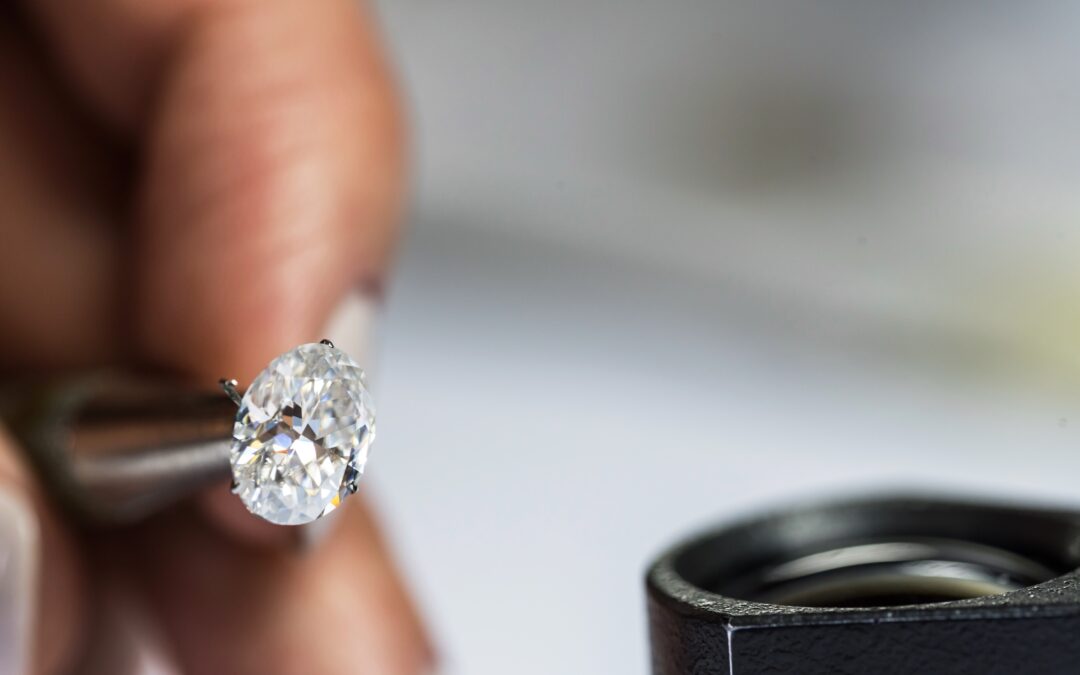When designing or creating a piece of jewellery baring diamonds, finding the right balance between metal and gemstone can be somewhat bewildering. Each diamond is unique and presents different qualities that define its value. Some may find it relatively simple to select the type of metal they wish to wear however the inclusion of a precious diamond need not be so arduous. We’ll explain below some key features to consider when choosing the right diamond for bespoke jewellery.
As well as personal preference, it is necessary to consider the four C’s – Cut, Clarity, Colour, Carat. This grading system, created by the GIA Authority in the early 1940s, is now recognised globally and is the international standard by which all diamonds are measured.
The four C’s will essentially impact the budget set aside for the diamond therefore making it a paramount decision for the entire process. We are pleased to be able to offer a range of diamonds to suit your needs and preferences and also guide you in your choices.
Cut
The form of a diamond is especially cut to capture and diffuse light. The “Cut” is primarily reference to the depths, lengths and angles of the many facets which each reflect light, creating the emblematic, luminescent sparkle. This is not to be confused with the shape of a diamond. Though recent definitions have confounded the two, diamond shapes refer to the external form or outline of the precious stone such as Round, Oval, Heart, etc.
Achieving a high quality definition in a diamonds cut requires precision and expert craftsmanship. Proportion, the symmetry of the facets and how these appear from the top are hefty factors in the valuation of such diamonds. Their finish, or rather their polish, enhances the whole and provides a faultless surface.
Clarity
In order to fully appreciate the valuation of a diamond, it is first important to understand the definitions of the grading system for clarity. The GIA scale for Diamond Clarity is divided into six fundamental categories:
- Flawless (FL) No inclusions and no blemishes visible under 10x magnification
- Internally Flawless (IF) No inclusions visible under 10x magnification
- Very, Very Slightly Included (VVS1 and VVS2) Inclusions so slight they are difficult for a skilled grader to see under 10x magnification
- Very Slightly Included (VS1 and VS2) Inclusions are observed with effort under 10x magnification, but can be characterized as minor
- Slightly Included (SI1 and SI2) Inclusions are noticeable under 10x magnification
- Included (I1, I2, and I3) Inclusions are obvious under 10x magnification which may affect transparency and brilliance
Inclusions and blemishes are evaluated according to their size, nature, texture and of course position on the diamond and how these may affect the visual aspect of the stone.
Colour
When speaking of diamonds and their colour, typically we are drawn to the whitest and brightest. By GIA definition, “diamond colour actually means lack of colour” therefore implying that diamonds as a whole are coloured. However the colour rating, which has been characterised against superior stones, imposes the diamond of colourlessness to be of the highest and purest standing.
Diamond colours are graded from D to Z and are compared under controlled lighting. Again, these classifications are standardised at a global scale.

Whilst diamonds are available in all ranges, in order to upkeep the high quality and standard of our work at BDF we primarily remain within the D to G range, after which the disparity in colour becomes apparent and the quality of the final piece is compromised.
Carat
Often confounded with the visual scale of the gemstone, carat is the diamond measurement of its weight. Within the industry, jewellers commonly refer to diamond weight by “points” whereby 100 points is equal to 1 carat and a metric carat is equal to 200 milligrams. Inevitably the larger the diamond, the heavier it is likely to be, therefore the carat value is greater.
However it must be noted that diamonds of equal carat are still likely to differ in price as each diamonds valuation is also dependant on the other three C’s.
Book a call in with us to enquire about choosing the right diamonds and how we can help you create your next piece of bespoke jewellery.




Recent Comments